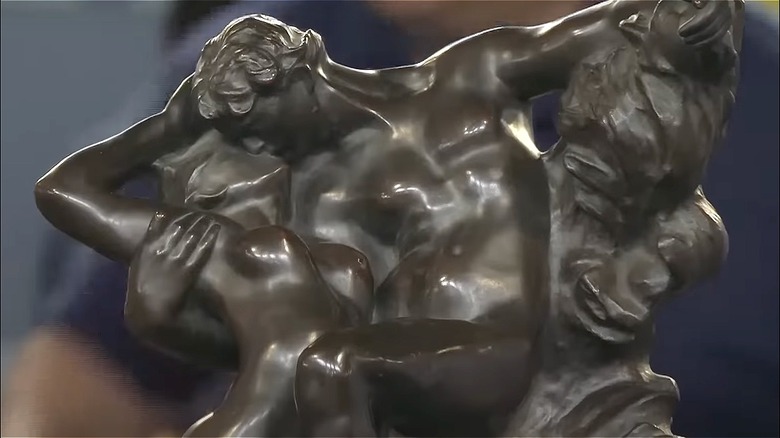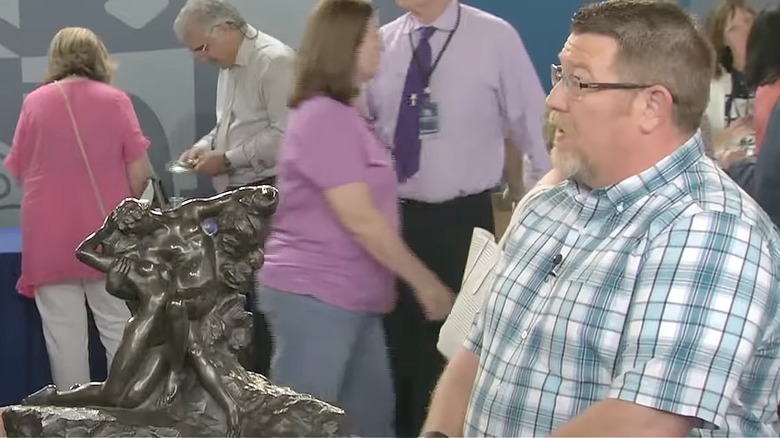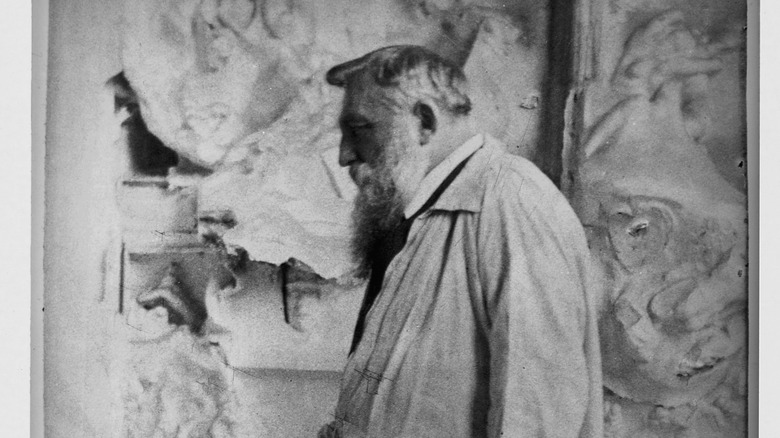What Happened To Auguste Rodin's Eternal Spring From Antiques Roadshow?
"Wow," was the first word to escape the mouth of a stunned James Kenner when he learned the estimated value of the bronze Auguste Rodin sculpture he'd brought to "Antiques Roadshow" in Fort Worth, Texas, in 2016 (via PBS). "I was amazed," Kenner told the Dallas Observer. "Completely blown away." The appraiser, Eric Silver, initially doubted it was an authentic Rodin, but after a close inspection, he realized he was looking at the real deal, per "Antiques Roadshow." He estimated that if it went to auction after authentication, it could bring in as much as $500,000.
Rodin, who lived from 1840 to 1917, is considered one of the greatest sculptors in history and is probably best known for "The Thinker," per Britannica. Antiques Roadshow is a long-running PBS television program that brings world-class appraisers to various cities around the U.S. to interact with local antique owners. And in this episode, Silver was blown away. "We actually see a lot of Rodins on the show, and every single one is a fake or reproduction," he told Kenner. "In the 21 years of the Roadshow ... you've probably come in with the only authentic Rodin bronze ever to come into the show." Jenner returned the sculpture to his parents, who sold it at auction, bringing in around $380,000. But getting from the show to the sale was no easy feat.
All in the family
Auguste Rodin created the bronze named "L'Eternel Printemps" ("Eternal Spring") in 1884. The piece is related to his unfinished masterwork "The Gates of Hell," and he cast it in bronze between 1898 and 1918, per the Rodin Museum and Britannica. According to Meredith Meuwly of Heritage Auctions in Dallas, Texas — who helped the Kenner family sell the piece — there are around 80 or so "known casts" of the sculpture (via "Antiques Roadshow").
The Rodin bronze has been in James Kenner's family for years, starting with his great-great aunt, who passed it on to his great-grandmother. It then went to his grandmother and finally to his father. "My parents are still alive, but I had expressed an interest in the Rodin," he told The Dallas Observer. "I thought it was a very beautiful piece, so I would like to have that. Everyone agreed." But the family instead decided to sell it. "I think the proceeds would go to his father's retirement," Eric Silver recalled (via "Antiques Roadshow").
An arduous authentication process
Going from "Antiques Roadshow" to the auction block required an arduous process that began with Meredith Meuwly contacting the Committee Auguste Rodin in France, which is the organization that certifies whether a Rodin is authentic or not, per "Antiques Roadshow." They brought the bronze to New York, where someone from the committee came to inspect the piece, spending several hours pouring over it. "It had to be photographed, it had to be measured, to the hundredth of the centimeter to the exact same size," Meuwly recalled. "Every marking had to be photographed."
A few weeks later, the Kenners got their answer: It was authentic, from the second state, third reduction, and cast during the artist's life, which made it more valuable. "Following careful inspection, [the Committee Auguste Rodin] informed the owner that his bronze is an authentic Auguste Rodin lifetime cast and will be added to Rodin's catalogue raisonné," "Antiques Roadshow" told The Dallas Morning News. The Kenners sold the Rodin bronze at a Christie's auction in London. When James Kenner brought his family's sculpture to the show that day in 2016, he had no idea how valuable it would turn out to be. "I didn't expect a number like that at all," he told the Dallas Observer. "I was thinking maybe a few thousand. You can probably see it on television. It was a little bit of disbelief there at that amount."


